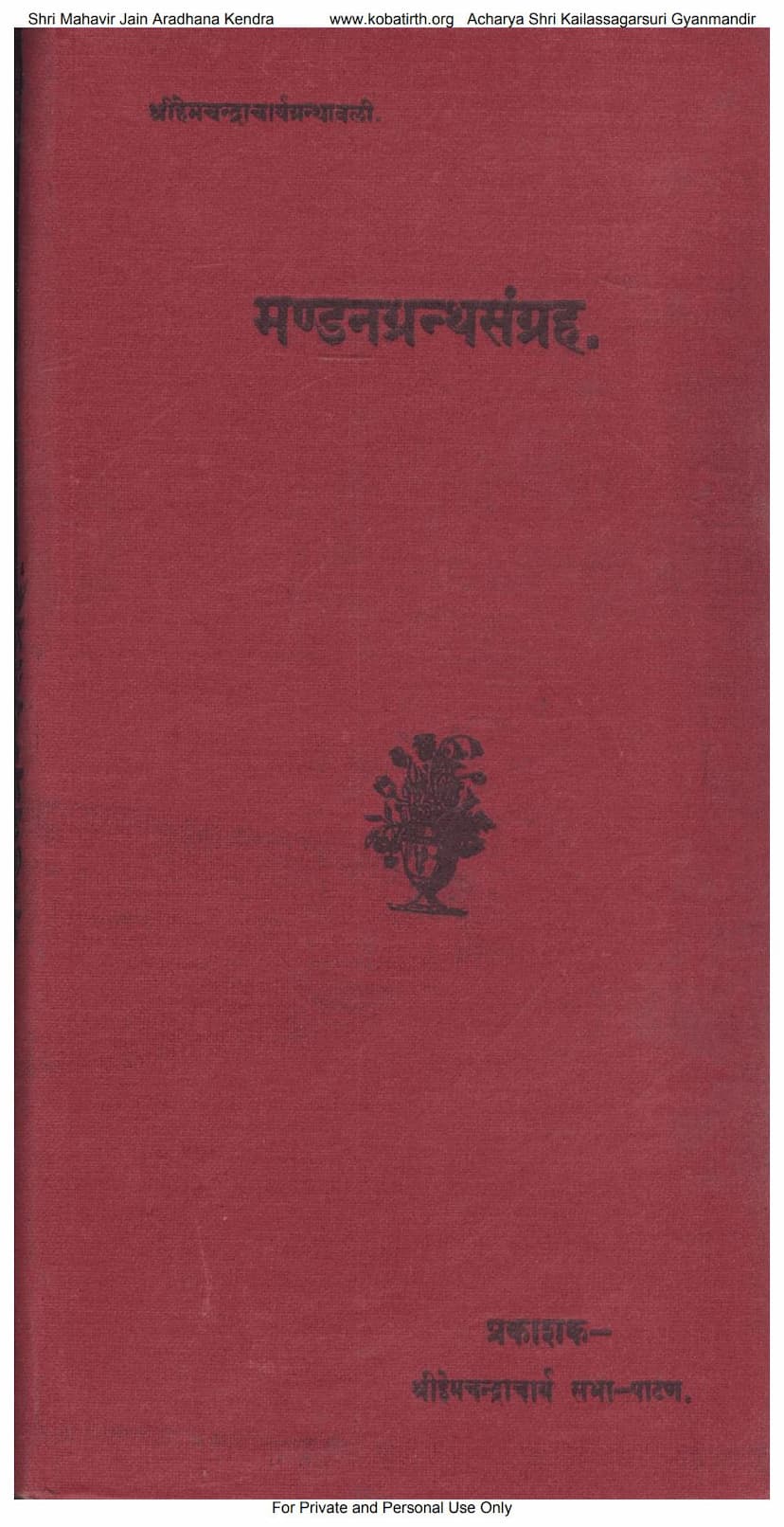Mandan Granth Sangraha Part 01
Added to library: September 2, 2025

Summary
The provided text is a collection of Jain scriptures from the "Mandan Granth Sangraha Part 01" by Mandan Mantri, published by Laherchand Bhogilal Shah. This particular volume is part of the "Shri Hemchandracharya Granthavali" and is noted as item number 7, 8, 9, 10, and 11 within the series.
The content is primarily in Sanskrit and Prakrit, with some Gujarati. It appears to be a compilation of several works, including:
-
Mahishvarkrit Kavya Manohar: This seems to be a significant portion, detailing the life and qualities of a person named "Mandan." The text describes his birth, upbringing, education, and his exceptional virtues. It highlights his intelligence, his prowess in various arts and sciences (grammar, drama, music, etc.), his generosity, his character, and his marriage. The narrative uses rich poetic language and detailed descriptions of events and settings. It mentions his lineage, his father's position, and the auspicious events surrounding his life. The latter part of this section delves into detailed descriptions of seasons, their enjoyment by Mandan, and various social and royal activities.
-
Mandan Mantrikrit Mandan Granth Sangraha: This is the overarching title, indicating a collection of works by Mandan Mantri. The "Mandan Granth Sangraha" itself is further broken down:
- Kadambari Mandan: Likely an adaptation or commentary on the famous Sanskrit novel Kadambari.
- Champu Mandan: A Champu kavya, a genre that blends prose and poetry.
- Chandra Vijay Prabandh: A narrative work likely detailing the victory or exploits of someone named Chandra.
- Alankar Mandan: This is a treatise on Sanskrit poetics and rhetoric (Alankara Shastra). It defines and illustrates various figures of speech, poetic defects (doshas), merits (gunas), and poetic sentiments (rasas).
The text also includes a "Namavali" (list of names) of donors and supporters, as well as a list of other works being prepared under the Shri Hemchandracharya Granthavali.
Key Themes and Content:
- Biographical Narrative: A significant portion is dedicated to the life of "Mandan," presented in a highly eulogistic and poetic style. This narrative focuses on his noble birth, exemplary character, intellectual brilliance, and moral virtues.
- Poetics and Rhetoric (Alankar Shastra): The "Alankar Mandan" section is a critical component, systematically explaining the principles of Sanskrit poetry. It covers:
- Definition of Poetry (Kavya): What constitutes good poetry.
- Poetic Defects (Dosha): Various errors in words (padadosha), sentences (vakyadosha), and meanings (arthadosha).
- Poetic Merits (Guna): Qualities that enhance poetry, such as grace (madhurya), gentleness (saumyata), clarity (prasannata), etc.
- Schools of Poetics (Riti): Discussion of different styles like Vaidarbhi, Gaudiya, and Panchali.
- Sentiments (Rasa): Explanation of the nine primary sentiments (Shringar, Hasya, Karuna, Raudra, Veera, Bhayanaka, Bibhatsa, Adbhuta, Shanta) and their subdivisions.
- Figures of Speech (Alankara): Detailed explanation and examples of numerous figures of speech, including Punaruktavadabhasa, Vakrokti, Chitram, Anupras, Yamaka, Shlesha, Rupaka, Upama, Malopama, Utpreksha, Apahnuti, Atishayokti, Deepakam, and many others.
- Poetic Compositions: The text seems to illustrate these concepts with verses, likely composed by Mandan himself or other poets of his time.
- Genealogy and Patronage: The text includes details about the lineage of Mandan and mentions patrons and supporters, indicating the cultural and social context of its creation.
- Religious and Moral Values: Underlying the narratives and poetic discussions are Jain principles of morality, virtue, and devotion, as is characteristic of works associated with Hemchandracharya.
In essence, this volume is a rich collection that showcases both literary and scholarly achievements, focusing on the life of a significant individual named Mandan and providing a comprehensive guide to the art of Sanskrit poetry.